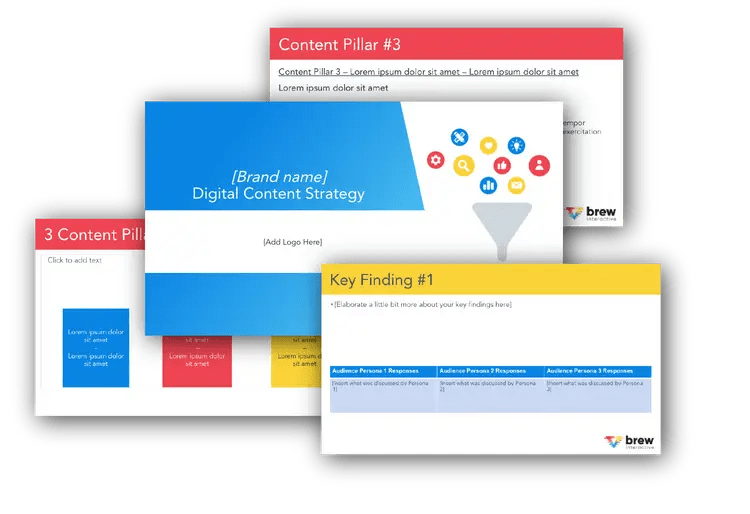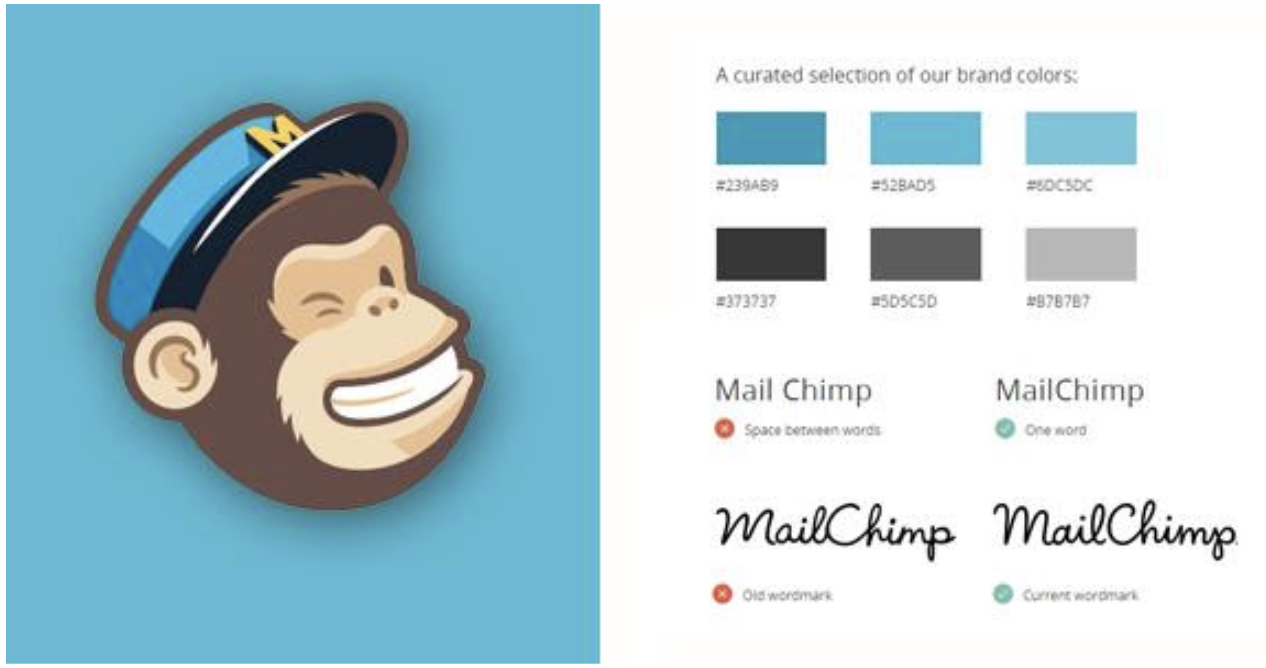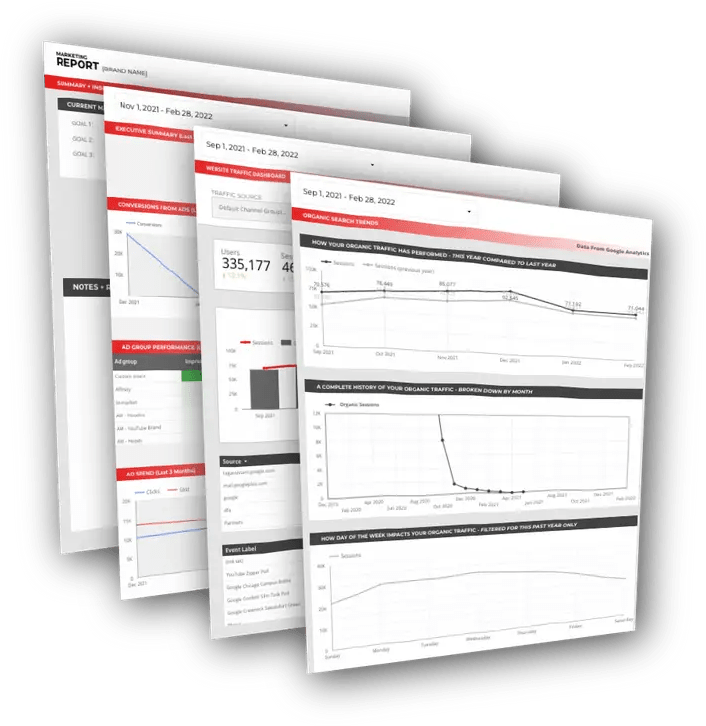There may come a time when your company can’t achieve every marketing goal internally and you need to outsource a service – in which case, you must first shop around.
However, in most cases, this turns out to be a daunting task. What if you don’t have the time or the resources to check out the offerings of your potential vendor on their websites?
Also, more often than not, it’s unlikely that you’ll find their pricing information online. Should you then spend hundreds of hours talking to their sales reps?

Fortunately, there’s an easier way to manage all of this. Simply create a request for proposal (RFP) and send it to your preferred list of vendors. This article will help you learn all about an RFP and how to write one, so let’s get started.
What is an RFP?
As mentioned earlier, when you’re unable to create a service or product in-house (due to a lack of resources, expertise, or time), you can create an RFP that captures the details of the project and share it with external vendors.
A request for proposal, or RFP, allows you to collect offers from various agencies and select the one that best meets your criteria, both in regards to expertise and budget.
For example, let’s consider the example of a healthcare service provider who needs help with content creation and management of their LinkedIn and Instagram accounts. To do this, they would create a digital marketing RFP and share it with a number of qualified marketing agencies.

Agencies who are interested can send in their proposals which will then be reviewed by the RFP issuer. This process would include conducting interviews, getting references, and asking the agencies to submit their bids. Finally, the healthcare service provider would choose the vendor that checks all of their boxes.
Many amazing marketing and business collaborations begin with an RFP.
Why Should You Use a Marketing RFP?
Because an RFP is a single document that gets submitted to multiple vendors, the process saves you time by connecting you to many qualified digital marketing agencies in one fell swoop.
If you have created a well-written and thorough RFP, you are likely to receive equally informative proposals complete with an agency’s skill, pricing, and deliverables unique to your requirements. With these factors to review with your team, you can easily identify which vendor fits your needs the best – without the hassle of individual interviews.
In addition, an RFP will allow you to compare a number of different vendors quite easily with respect to their expertise and capabilities. This will not only help you weed out the not-so-qualified candidates easily as well as find the best solution at the most affordable price.

Below are 15 key points you need to include when you structure your marketing RFP. However, keep in mind that while these are standard points to help you optimize the number of replies you get, there’s no need to adhere to a restrictive, cookie-cutter format. Instead, let them guide you towards an RFP that best represents the needs of your company.

Free B2B Content Strategy Template
Not sure where to start when it comes to your content strategy? Struggling to gain traction? Grab our free B2B content strategy template to help you document your strategy.
What Should You Include in Your Marketing RFP?
Before you start writing your marketing RFP, you need to make sure that you know what exactly you are looking for. For this, you should create a detailed outline with sections for each type of information you seek.
However, make sure that you don’t ask them for extremely trivial or unnecessary information. Your RFP essentially needs to cover your goals of the project and what you expect from it very clearly.
To help you with this, we’ve covered a list of the most important points to include in a marketing RFP. We’ve also shared examples for each of these points that will help you get an idea of the kind of language you need to use.
1. Invitation to Tender (Overview)
Each RFP should include a comprehensive overview of exactly what you are looking for. This will include your objectives and your overall expectations from the project. Take a look at the example below:
| “[COMPANY NAME], an organization in the [INDUSTRY NAME] industry in the [SECTOR NAME] sector, would like to invite your company’s proposal for the creation of content and management of [COMPANY NAME]’s LinkedIn and Instagram accounts. Please see Part A: Requirement of this RFP for further details. Should you require more information about our organization, please visit our corporate website at [YOUR WEBSITE].” |
2. Background
This is your opportunity to talk about your company’s mission and vision and let your proposers know what makes you unique. It’s also the space to explain why you think their marketing agency is a good fit – a necessary detail to receiving tailored bids.
Once again, an example can be found below:
| “[COMPANY NAME] seeks to create a vibrant care community enabling people to live well and age gracefully. [NAME] coordinates and facilitates efforts in care integration to achieve the best care outcomes for our clients. We do this by empowering them with health and social care information and arranging for their care when they are discharged from hospitals. Our work in the community brings care services and information closer to those in need. For more information, please visit [WEBSITE], or read our blog article on [BLOG URL].” |
3. Submission Deadline
You’ll need to clearly mention important information related to the submission of the RFP so that each vendor knows how and where to submit their proposal for your consideration.
| “Please submit your proposal by [DATE, MONTH, YEAR], to [NAME] at [EMAIL ADDRESS].” |

4. Contact Information
It’s also a good practice to have a window within which proposers can contact your business with any questions before the final decision is made.
| “For clarifications, please contact [CONTACT NAME] at [EMAIL ADDRESS]. All clarifications are to be made in writing before [DAY, MONTH, YEAR], [TIME] and shall form part of the eventual contract.” |
5. Timeline
When you include a timeline in your marketing RFP, you eliminate any vendor who can’t work within your time frame. Each timeline typically marks the completion of project phases such as strategy, planning, and implementation.
If your project is complex and you’re unsure of which dates to include, use estimates (noting that the deadlines are flexible). Alternatively, you can ask the bidder to provide an estimated time frame in their reply. However, be sure to guide them with a clear vision of how long each project should take.
| “Tenderers should provide a concise proposal of how they intend to consolidate and improve [COMPANY NAME]’s social media presence, including milestones, the timeline of implementation/phases, and related key performance indicators (KPIs) for each social media platform.” |
6. Objective/Marketing Goals
You’ll want to have an outline of expected goals and outcomes from each project portion. For example, objectives can include search engine optimization, advanced lead generation strategies, or paid media strategy. It’s important for you to be very clear here so that you can avoid any miscommunication or confusion in the bids or in future collaboration.
“The appointed vendor will work with [COMPANY NAME]’s [DEPARTMENT] team to produce content for [COMPANY]’s LinkedIn and Instagram accounts. The vendor is required to create content and manage both the LinkedIn and Instagram page. The objectives of the projects are ranked in order of priority as follows:
|
7. Target Audience
To help a marketing vendor understand your goals better, they’ll need to have a firm grasp of your target audience. So, it’s always a good idea to mention it clearly in your RFP. Here’s how you can do it:
“Target Audience
Target Audience Needs
|
8. Brand Guidelines
Similarly, including brand guidelines will lead these marketing bids in the right direction. This may be the first time a vendor is seeing your brand, so providing these details will help them get to know you. You can include:
|

A taste of Mailchimp’s brand guidelines illustrates some details you may like to include in your marketing RFP.
9. Budget
Any vendor needs to know what you’re able to afford to pay for their service before they’ll move forward with you, as well as a number or pricing schedule for the media budget.
Take a look at the example text and table below:
| “Please provide an itemized quotation of all costs for the production of the stories, using the table provided. The vendor should also indicate whether the cost is inclusive of GST.
The vendor is to indicate clearly all costs, including optional costs for items not requested in the specifications but will value-add to work proposed. The vendor will provide an invoice at the end of every month for work done. The vendor will be paid on a monthly basis, 60 days from the date of receipt of the invoice, upon satisfactory completion of the project. Any special payment milestones are to be stated clearly in your quotation.” |
| S/N | Item | Description | Quantity | Unit Price (SGD) | Sub-Total (SGD) |
| Section 1: LinkedIn | |||||
| 1 | Monthly Project Management |
|
12 | ||
| 2 | LinkedIn Advertising Management |
|
12 | $1000 | $12000 |
| 3 | LinkedIn post (72 posting a year) | Post adapted from [OTHER COMPANY]’s social media platforms (e.g. FB page and blog,
|
54 | ||
Multi-frame, GIFs or short video clips, to be created based on advised topics
|
18 | ||||
| Grand Total | |||||
| Optional Items |
10. Scope of Work
You’ll need to dig a little deeper here to outline individual criteria, usually as a bulleted list. Be specific about the tasks they will need to work on, such as the number of monthly content pieces to be delivered, the percentage increase in social media followers, or the number of monthly ads to be run.
“LinkedIn page and project management:
LinkedIn Content Creation and Management:
|
11. Potential Roadblocks
HubSpot explains that a successful RFP is explicitly clear about potential pitfalls that could slow the projected timeline or fall outside their area of expertise. To do this, it’s essential that you include specific questions that require deliberate answers as opposed to simple “yes/no” ones.
For example, you could use questions such as:
| “Could you explain what kind of strategy you’ve used to solve similar business problems encountered by any of your other clients? Did you run into any unforeseen bottlenecks? How did you overcome them? If you could do things a little differently, what would you change?” |

12. Deliverables
Once the details have been defined, it’s useful to clearly describe what you expect to receive from the agency in their bid. Using a checklist here is a great strategy to see who’s capable of meeting your demands and has read the full RFP. The RFP should serve as a knowledge base of everything that’s to be expected.
“The vendor’s proposal for a year-long social media and content marketing strategy and content pillars that best represents [COMPANY]’s LinkedIn and Instagram target audiences. The proposal should include:
Submission Mock-up Requirements:
|
13. Samples
You can request marketing samples of a vendor’s past work, case studies, or projects they have completed within similar industries. This is a standard procedure for marketing services to prove they have the expertise to meet your criteria.
| “Company information including portfolio within the last three years of related industry clients and profiles of proposed account servicing team” or “Vendor must have prior experience managing at least one of these social media pages for business; Facebook, LinkedIn, Instagram.” |
14. Evaluation Criteria
One important thing to include in your RFP is the information that will help vendors understand how you plan to assess their offers. These criteria can include samples, KPIs, experience with social media, and/or cost of service within your price range. Take the time to brainstorm these items with your team before eliminating vendors who don’t meet them.
Alternatively, you can simply state how you plan to evaluate each vendor according to a percent weightage for each category. For example:
|
15. Terms and Conditions
For the sake of legality, you can include a copy of your company’s Standard Conditions of Contract here.
| “[COMPANY] will own the rights to the content written, the final artwork, illustrations/infographics/photographs/videos/GIF. Rights to stock photography/music purchased for use in the content will also reside with [COMPANY] in perpetuity for use in various mediums according to our discretion.” |
Some Do’s and Don’ts of Sending RFPs
- Don’t restrict yourself to sending your marketing RFP only to the bigger, well-known vendors as smaller vendors are usually capable of providing more customized solutions along with better service. So, make sure to research and create a long list of vendors you can send your RFP to as this will prove to be immensely beneficial.
- Don’t be fixated on the costs alone. While this is an important consideration, it would be wise not to make a selection based on the vendor who offers the lowest price as this can affect the quality of their services. Instead, make sure that the vendor you select understands your needs and shares similar values as you. In the long run, such collaborations are likely to be most fruitful.
- Be extremely specific about your needs and articulate them clearly. Avoid using vague and generic terms to define project outcomes. Instead, quantify them wherever possible.
- Break up your text into bulleted or numbered lists wherever possible for easy readability. This will ensure that vendors don’t miss out on crucial information amidst lengthy blocks of text.
- Don’t be hasty while making a decision about which vendor to work with. An RFP is simply the first step in your selection process. This needs to be followed up with multiple rounds of interviews and conversations to make a fair evaluation.
Key Takeaways
The more unique, clear points you can include in your marketing RFP, the more likely you are to receive more targeted responses. While you may need to dedicate more time upfront to include these steps, you’ll get closer to achieving your goals in the long run. Clarity in writing is a strong precursor to the success of any collaboration to come from a marketing RFP.

Free DataStudio Marketing Report
Improve your marketing reporting with our free DataStudio template that pulls data from Analytics, Google Ads, and Search Console to get a 360 degree view of your digital performance.





